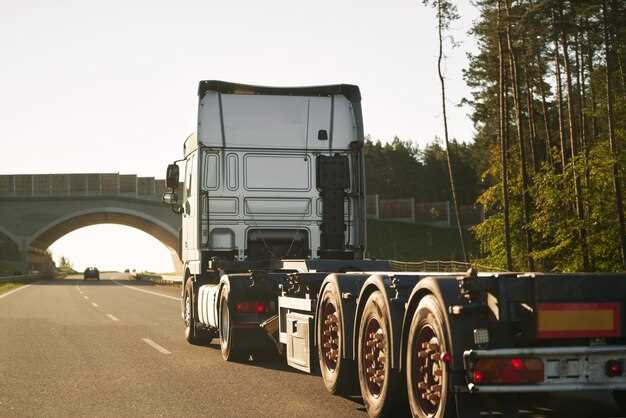
The landscape of trailer laws is set to undergo significant changes in 2025, marking a pivotal shift for trailer owners, manufacturers, and users. Understanding these upcoming regulations is crucial for anyone involved in the trailer industry, as non-compliance could lead to legal repercussions and costly adjustments.
New legal frameworks are being introduced to enhance safety, environmental standards, and operational efficiency. These regulations will not only impact how trailers are designed and manufactured but also dictate the responsibilities of those who use them on public roads. As these laws take effect, staying informed will be essential to ensure compliance and avoid potential pitfalls.
Trailer laws are evolving to address modern challenges, including emissions, safety features, and roadworthiness. The upcoming changes aim to create a comprehensive legal foundation that reflects current technological advancements and societal needs. Therefore, trailer owners should prepare to adapt to this new regulatory environment to avoid any disruptions in operations.
Understanding the Key Changes in Trailer Weight Limits
The upcoming regulations set to be implemented in 2025 bring significant updates to trailer weight limits, which are crucial for ensuring compliance with legal standards. These changes aim to enhance road safety and efficiency in transportation.
One of the most notable alterations involves the adjustment of maximum allowable weight for various types of trailers. The new laws will categorize trailers based on their design and purpose, establishing clearer guidelines for manufacturers and users alike. This distinction is intended to prevent overloading, which can lead to increased wear on vehicles and higher rates of accidents.
Furthermore, the regulations will introduce stricter enforcement measures. Authorities will conduct more frequent checks to ensure trailers comply with the revised weight limits. This legally enforceable action aims to hold operators accountable and promotes adherence to the new standards.
Additionally, these changes will include penalties for non-compliance, emphasizing the importance of understanding and adapting to the new weight limits. Operators need to recalibrate their operations and potentially invest in lighter materials or alternative transport solutions to meet the updated legal requirements.
As these new regulations come into effect, staying informed and proactive will be essential for anyone involved in transporting goods via trailers. Adhering to the revised weight limits will not only ensure compliance with the law but also contribute to safer and more efficient roads for all.
Compliance Requirements for Trailer Safety Equipment

As new trailer regulations come into effect in 2025, it is crucial for trailer owners and manufacturers to understand the legal requirements surrounding safety equipment. Compliance with these laws is essential to ensure the safety of both the trailer and its users on the road.
One of the primary components of trailer safety compliance is the requirement for effective braking systems. Trailers must be equipped with brakes that meet specific performance standards based on their weight and the type of loads they carry. These laws are designed to reduce the risk of accidents and enhance stopping power in emergency situations.
Another important aspect is the need for proper lighting and reflectors. All trailers must have functioning brake lights, turn signals, and taillights that are clearly visible. Additionally, reflectors are mandatory to ensure trailers can be seen in low-light conditions, contributing to overall safety on the roads.
Safety chains are another requirement that cannot be overlooked. These chains provide a secondary connection between the trailer and towing vehicle, preventing the trailer from detaching while in motion. Compliance with the appropriate chain specifications is necessary to enhance security during transit.
It is also essential for trailers to possess a valid certification label indicating compliance with safety standards. This label must display the manufacturer’s information, the Gross Vehicle Weight Rating (GVWR), and any additional relevant information that affirms the trailer meets legal regulations.
Moreover, regular maintenance and inspections of safety equipment are necessary to ensure ongoing compliance with laws. Owners must stay informed about whether their trailers are in good working condition and whether any part of the safety equipment needs repair or replacement. In many jurisdictions, a failure to maintain safety equipment can result in legal penalties.
Understanding these compliance requirements is critical for anyone involved in the use or manufacture of trailers. Proactive adherence to these laws not only enhances the safety of the vehicle but also protects against potential legal repercussions.
Implications of New Trailer Registration Processes

The upcoming changes to trailer registration processes in 2025 will have significant legal implications for both trailer owners and manufacturers. One of the primary updates is the shift toward electronic registration systems, which aims to streamline the administrative workload while enhancing compliance with state regulations.
This transition will require trailer owners to update their registration methods, moving away from traditional paper forms to digital submissions. This update not only increases efficiency but also minimizes the risk of errors associated with manual entries. The legal responsibilities of trailer owners will be clearer; they will need to ensure that all information provided is accurate and up to date, as discrepancies could lead to fines or other legal repercussions.
Furthermore, the implementation of stricter identification protocols will necessitate that manufacturers adhere to new standards for labeling and documentation. This change is intended to improve traceability within the industry, allowing for better regulation of trailer safety and compliance. Manufacturers will need to be vigilant in meeting these new demands or risk facing penalties for non-compliance.
Additionally, the new processes are designed to enhance transparency. By making registration information more accessible to law enforcement and regulatory bodies, illegal trailers can be more easily identified, ultimately promoting safer roads. This legal shift underscores the necessity for all stakeholders in the trailer industry to remain informed and proactive regarding these upcoming changes.
In conclusion, the implications of the new trailer registration processes in 2025 will necessitate comprehensive updates across the board. Emphasizing legal compliance, the importance of accurate registrations, and adherence to new manufacturing standards will be paramount for all involved in the trailer ecosystem.





